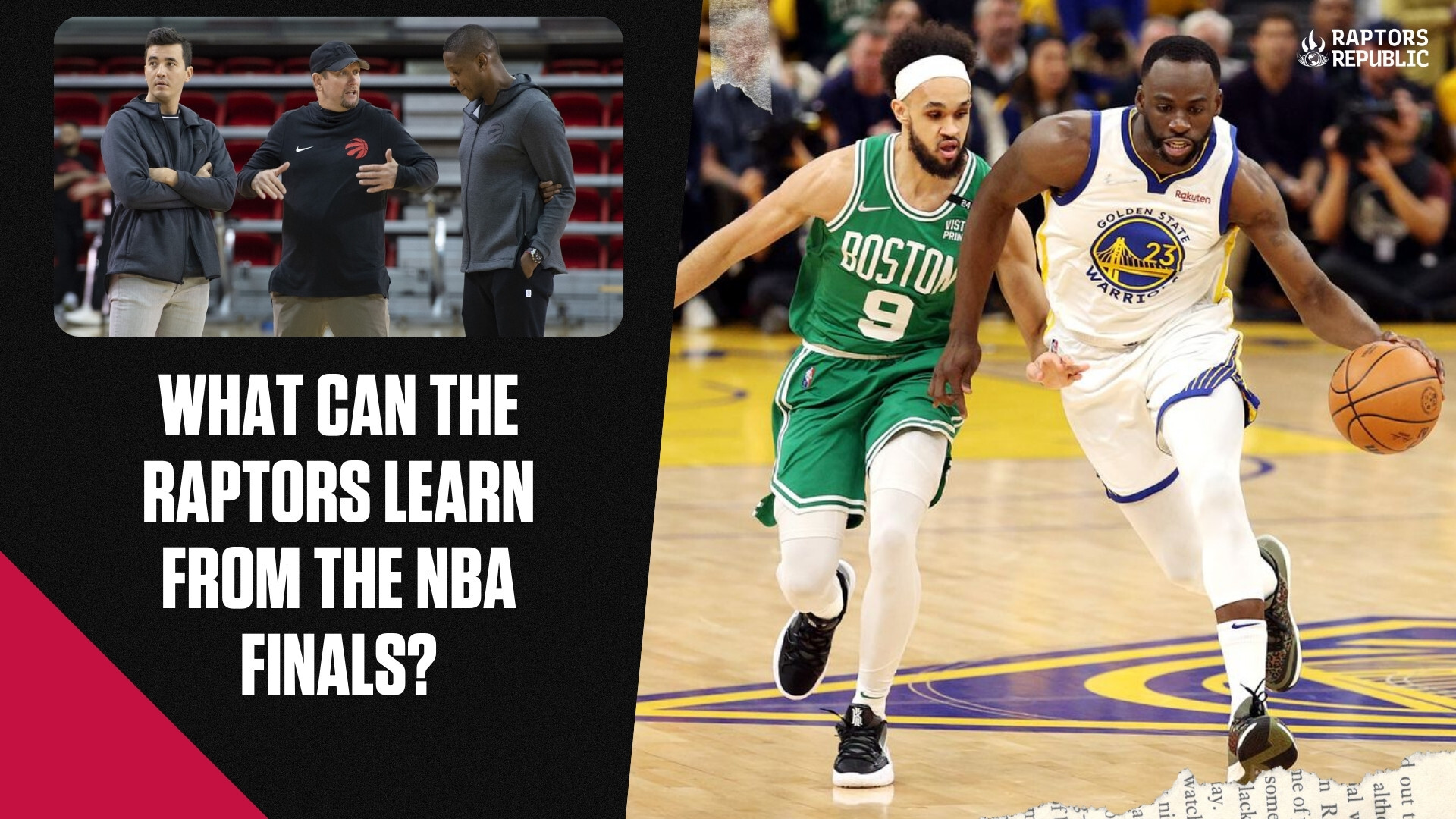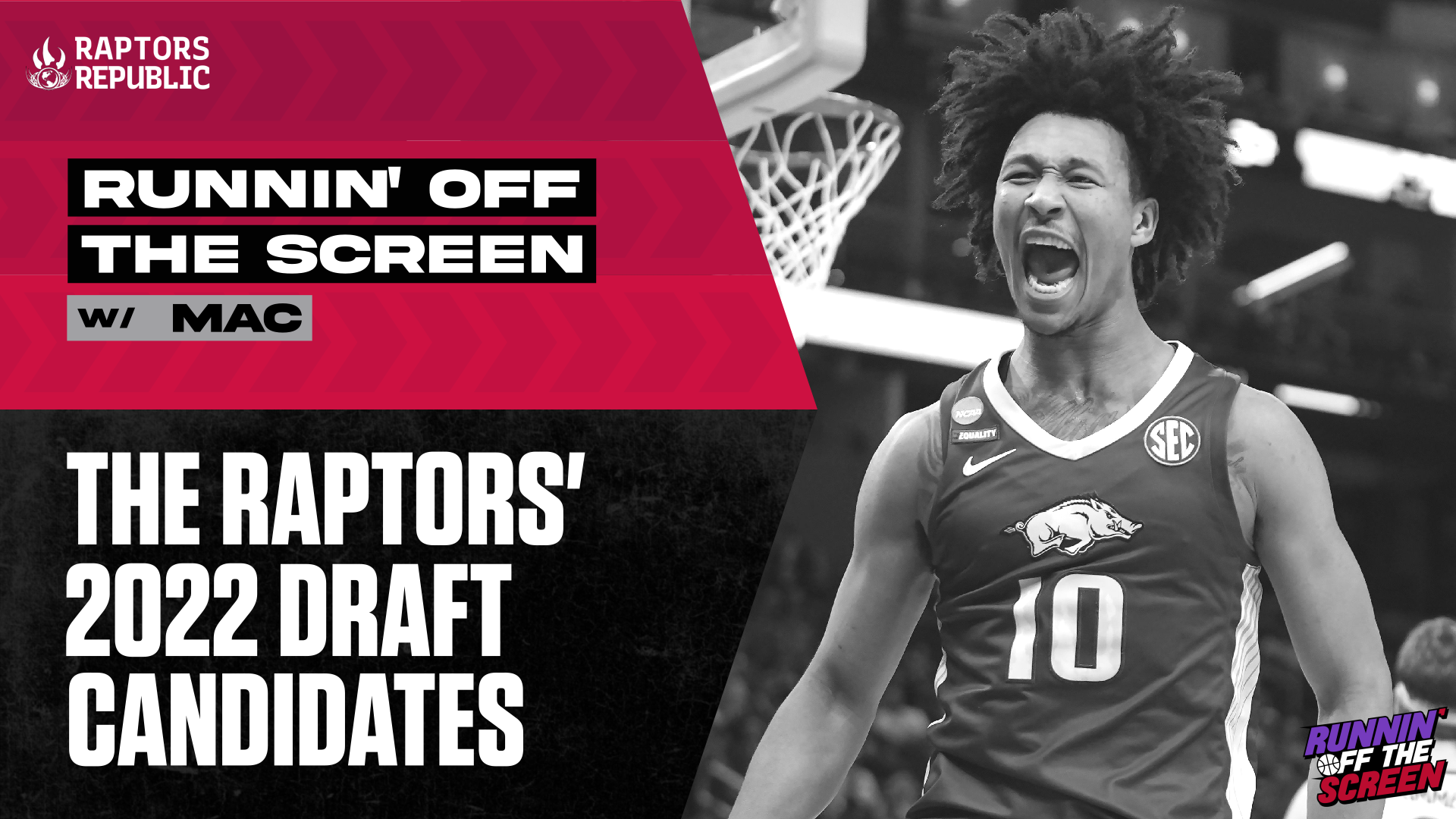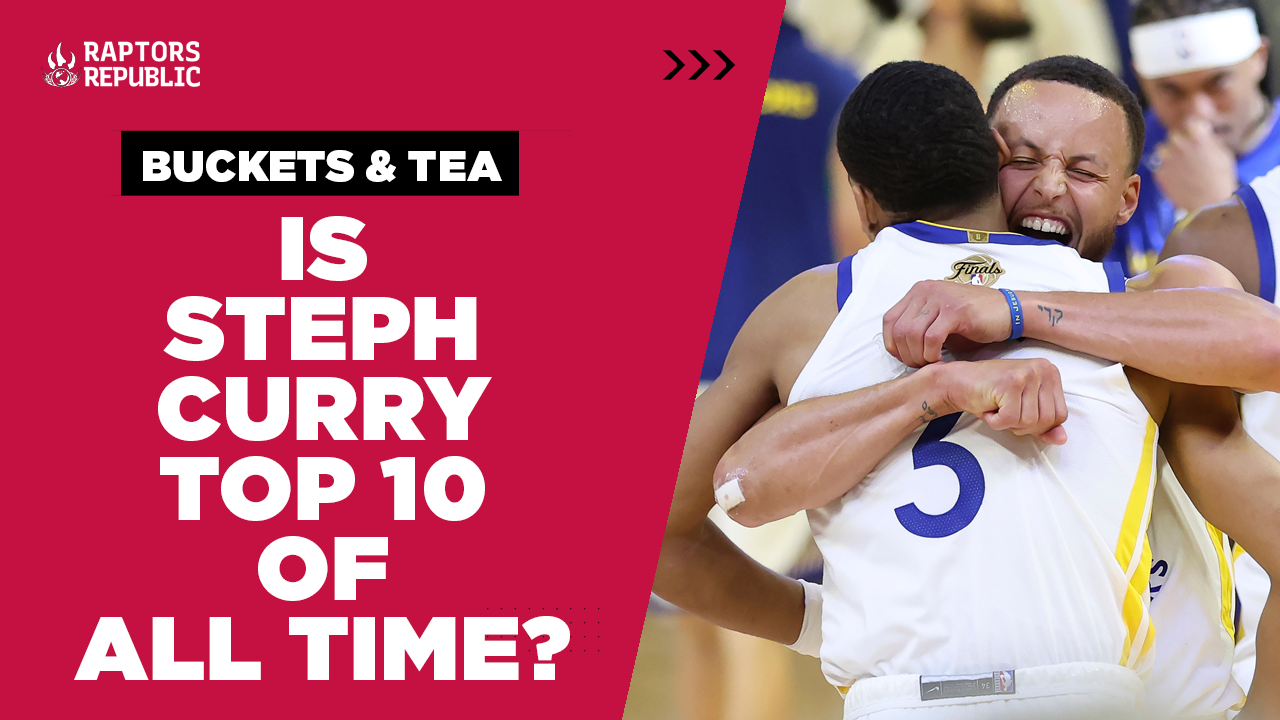The grind never stops, not even when the Toronto Raptors themselves are on vacation, enjoying their time off. That the Raptors are bystanders for the NBA Finals means there is mountain left to climb — lessons left to learn. And the two games so far have been chock full of lessons for the Raptors in particular.
On the defensive end, the Raptors have to feel fairly encouraged, with a hint of yearning. The Boston Celtics, especially, weaponize a defensive philosophy that bears some resemblances to Toronto. Both have similar concepts of enormous length and athleticism, dig and help like maniacs in the second level of defense, and trust you’ll recover to shooters because you’re so big. And hey, those strengths have done Boston proud so far, with some exceptions (more on those later). Furthermore, both teams love to switch, And yet — though the Celtics are arguably the best switching defense in the NBA, and the Warriors really struggle against switching, Boston chose not to employ switching very much in Games 1 or 2. There’s a lesson there: The Raptors were perhaps the most ideological team in the league last year, so committed to their schemes that they were willing to play fairly bad defense for stretches in order to remain in-scheme rather than compromise and play better in simpler concepts. As a result, they gave up the single highest rate of corner triples in the regular season — the second-most efficient shot in the game.
Boston showed a real willingness to adapt the scheme based on who was on the floor. They changed the height at which screener defenders met the ball, preferring to drop with Robert Williams III and (surprisingly) Al Horford while switching with Grant Williams. It worked. Even in Game 2 when Golden State’s offense went bananas, most of that came in transition and in isolation; Boston’s pick-and-roll defense has had very, very few letdowns.
Toronto doesn’t have a big capable of playing highly effective drop coverage. (Which, no matter what you read or think, is still incredibly effective in many situations. It worked against the freakin’ Golden State Warriors! Good teams need to have every tool in the bag, including “conservative” defense types. Just modern stuff like switching and blitzing isn’t enough.) Because of the Raptors’ reliance on switching, the Philadelphia 76ers bludgeoned Gary Trent jr. in Game 6; Trent switched onto Joel Embiid and then had to navigate the James Harden-Embiid pick and roll. He fought valiantly, but he didn’t have the chops to hinder the action. Philly won.
(Okay, a short detour here. Pascal Siakam is actually terrific, statistically, at playing drop defense. One of the best in the league. But for a variety of reasons, the Raptors want him guarding empty space away from the ball rather than directly in the pick and roll — starting him on a big limits Toronto’s defensive ceiling. But it would definitely have raised the floor against the Sixers. Arguably, the Raptors should have pre-switched Siakam with Trent before Trent was sucked into the Harden-Embiid pick and roll (the Warriors do that a lot with Draymond Green, getting him into actions no matter where he’s coming from), so that Siakam could have navigated the pick and roll and either switched or played drop as he saw fit. He’s able to do that. But adding a big other than Siakam who can do that, and who can just start on the opposing big to begin with, would have kept Siakam where he’s most dangerous and helped save Toronto’s defense elsewhere. Best of both worlds. Okay, end of detour.)
The Celtics have defenders in their rotation less capable than Trent. Peyton Pritchard has guarded Steph Curry, for heaven’s sake. But he didn’t have to survive the gauntlet that the Sixers put Trent through, largely because they were able to play a stable, conservative scheme and still stay attached to Curry and take away his open looks in the second half. The Celtics ask less of their defenders. Remember Marc Gasol? Damn he would help the Raptors right now.
This isn’t to say the Raptors need to get rid of Trent. Just the opposite. He’s an unbelievably talented and useful player for Toronto. Instead, having players who could catalyze schemes that better fit Trent’s talents would go a long way. It’s important whether that means Precious Achiuwa learns to play drop more effectively or the Raptors acquire another center who can — Khem Birch, healthy? But Toronto needs more weapons on the defensive end, or at least different kinds of weapons.
(Some smaller names who are statistically quite good at drop: Jalen McDaniels, Chimezie Metu, Isaiah Hartenstein, Mo Bamba, Naz Reid. It doesn’t have to be a star.)
Offensively, the Raptors have to feel a little good and a little bad watching this series so far.
Curry and Jayson Tatum have had some spectacular possessions in the pick and roll. Curry did it largely shooting the lights out early in Game 1, and Tatum did it passing late in Game 1. (Imagine, 20 years ago, trying to tell a fan that the point guard will do all the shooting and the small forward will do all the passing. Crazy times.) The Celtics cooked even more in isolation, with Jaylen Brown especially just going ham there. Even though he didn’t have a highly efficient shooting night, the Celtics were fantastic with him initiating, slashing through the lane, and hitting the paint. He does his role well, and even if shooting variance goes the wrong way, he’s the best at fulfilling that role on the team. In Game 2 it was the Warriors cooking in isolation, with Curry and Jordan Poole just going berserk with jumpers.
The Raptors have some of the foundational pieces to field an offense based on similar abilities, but they lack the context to make it all work. In Fred VanVleet, Toronto has one of the game’s best (really!) high-volume shooters. In Pascal Siakam, Toronto has one of the game’s best (really really!) high-volume isolation players. Those are real building blocks. But the rest of the spacing just isn’t there to make it work as effectively or as consistently as Boston or Golden State does.
Toronto desperately needs more shooting. It seems simple, but Horford, Marcus Smart, Derrick White, Pritchard, Daniel Theis, Klay Thompson, Jordan Poole, Otto Porter jr., and Andre Iguodala all hit triples in just Game 1 as non-initiating players. How many non-initiating shooters do the Raptors have? Two? Five on a good day when Achiuwa and Chris Boucher and Thad Young get hot (assuming Boucher and Young return). Gotta have more.
The Warriors got absolutely shelled in the fourth quarter of Game 1 with two non-shooters on the floor. Draymond Green and Andre Iguodala played together for five minutes, and the Warriors scored nine points. When Green and Kevon Looney were together, the Warriors didn’t score in the fourth. If Curry can’t lift a late-game offense to the promised land (against an admittedly elite defense) saddled with two non-shooters, then it’s clear why the Raptors struggled. The team simply needs more shooting, both in terms of internal development (Siakam and Scottie Barnes making steps would be most helpful for the team, obviously) and external addition (perhaps the same center who can play drop defense?).
(Some smaller-name bigs who are fair shooters and good at drop defense: Jalen McDaniels, Mo Bamba, Naz Reid.)
Jaylen Brown, in many ways, proved the difference between Golden State and Boston in Game 1. The Warriors — no disrespect to Andrew Wiggins, who has been great for the Warriors for a long stretch, now — don’t have as high-level a slasher who can create in the paint. That was a huge difference in the fourth quarter. The Raptors really, really don’t have that player. Someone who can attack a rotation and jump over a defender at the rim. Precious Achiuwa is getting there! Siakam can do it, but he’s busy being the one forcing the rotation in the first place. OG Anunoby has done it at low volume, but he’s too busy spacing the floor. (If Toronto adds more shooters, not only will the main guys have more room to do their thing, but Anunoby will also be allowed to stretch his wings because he won’t be so crucial as the team’s only non-guard spot-up shooter.)
There were similar moments in Game 2, at least until the transition points and shooting broke the game open. When the Warriors went zone — usually beaten by shooting! — Brown caught the ball, drove into the teeth, and finished through contact despite a well-timed and in-position helper. The Raptors were just about the worst offense in the league when facing a zone last year. Adding a driver or two who can just finish over someone would really help there, too. Later, the Warriors moved Green onto Brown (colour matchup!) to prevent the defensive collapses from those drives. It worked, showing that one guy who can hit the paint at will doesn’t a perfect offense create. There are counters. But Toronto can’t even force those counters yet. Gotta add some more drivers and finishers. (Lonnie Walker IV!)
(Some smaller names who are quite good at driving and good at playing drop defense and good at shooting: Jalen McDaniels, Naz Reid. Both are six-foot-nine, so they fit perfectly with the vision. Good lord they’d be good fits. Neither are free agents, so it’s not like they’d be easy additions, but they would be ideal fits. McDaniels, especially, seems like he might not be in Charlotte’s long-term plans, which means there’s at least a possibility. Maybe. Would be great.)
Some smaller points:
- I know that Steph Curry is basically the only guy who’s ever made split action work so well, but why couldn’t the Raptors run it? Toss Barnes in the post, have VanVleet and Trent screen for each other on the strong side, and you might open some cracks. It’s not a full-time thing, but I don’t see why it wouldn’t work once every few games. Nice little side to pair with the read-and-react offense.
- Green isn’t a good finisher or shooter, per se, but he makes pretty much everything work, always. Part of it is his constantly playing with pace. In Game 2 he set an empty-corner screen and dove posthaste to the rim. Catch, finish, and-1. Toronto doesn’t have any seven-foot screeners, but just having their six-foot-nine wings play with pace without the ball, making quick decisions about where to move, and getting there fast, would really help Toronto’s pick-and-roll game. This would especially help Barnes, who has the processing speed to make correct decisions at wildly high speeds. He spent a lot of time with the ball in the mid range dribbling, probing, slowing down, and thinking. And look, he was a rookie: Can’t blame him for that, not in the least. But more pace in his choices, with and without the ball, would be a really nice side-quest development for him.
- Re Jordan Poole, and also re Scottie Barnes: It really helps when quirky motion, off-beat players are deadeye shooters and can cut away from the rim as well as towards it, moving the defense no matter what direction they cut. Quirky players ought to fit fantastically in Nick Nurse’s philosophy. Young! Barnes! Guys who make rote decisions in surprising ways help spice up a fairly spiceless offense. Poole does that for the Warriors both behind the arc and at the rim. Kyle Anderson, say, would be a monster add for the Raptors by adding that juice as a passer and a shooter, besides. Or Barnes just becomes a deadeye and as a result wins MVP, that would work too. He was a great cutter despite defenders only guarding him below the free throw line. Forcing more attention from above it would change the game. If pace is the side quest, this is the main plot.
- Some justification for Toronto’s offense: The Warriors, the best offense of the playoffs, couldn’t score for huge swathes of time in the half court. They, too, needed to get going in transition to get some buckets and build a lead. Maybe it’s not such a bad thing that the Raptors also need transition points to really pad their offense!



